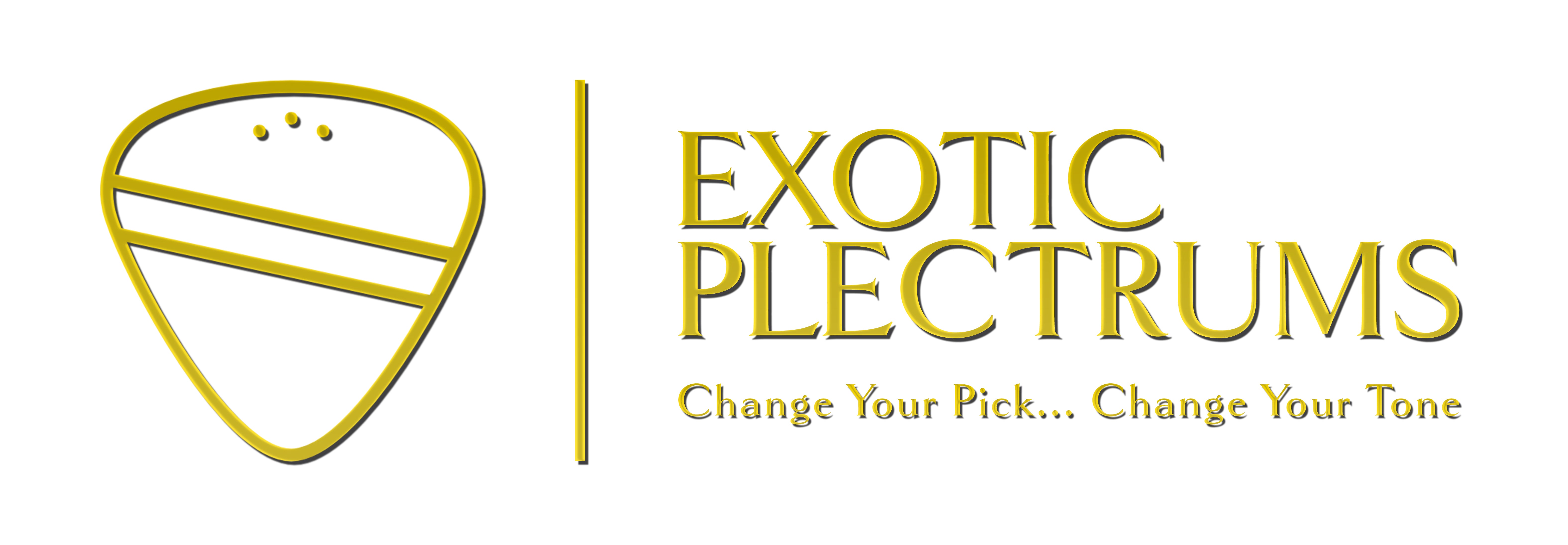Golden Line Turquoise Stone Guitar Or Bass Pick - 3.0 mm Ultra Heavy Gauge - 351 Shape - Specialty Handmade Stone Exotic Plectrum
Golden Line Turquoise Stone Guitar Or Bass Pick - 3.0 mm Ultra Heavy Gauge - 351 Shape - Specialty Handmade Stone Exotic Plectrum
Regular price
$7.99 USD
Regular price
$15.99 USD
Sale price
$7.99 USD
Unit price
per
Shipping calculated at checkout.
Couldn't load pickup availability
Golden Line Turquoise Stone Guitar Or Bass Pick - 3.0 mm Ultra Heavy Gauge - 351 Shape - Specialty Handmade Stone Exotic Plectrum
These exotic Golden Line Turquoise plectrums sound great for acoustic or electric guitar players, bass, ukulele and other string instruments due to their unique and clean tonal color production.
These picks are in a polished finish and have a very attractive aesthetic. Because these are a handmade product each one is unique and the inherent colors and patterns present in each individual stone will vary in appearance, as well as slightly in size and thickness. These plectrums are a very thick heavy gauge and measure approximately 3.0mm in thickness.
Start exploring new tones with these exotic Turquoise picks today because the simplest and most inexpensive way to change your tone is to change your pick.
Specifications:
• Thickness: 3.0 mm
• Color: Golden Line Turquoise
• Material: Reconstituted Turquoise
• Size: 30mm x 25 mm x 3.0 mm
• Shape: Standard 351 pick shape
• Blank guitar picks, no printing or logo
br>About The Material These Picks Are Made From:
Plectrums made from stone have been used traditionally throughout the world since the dawn of stringed instruments millennia ago. Turquoise is an opaque, blue-to-green mineral that is a hydrated phosphate of copper and aluminum. It is rare and valuable in finer grades and has been prized as a gemstone and ornamental stone for thousands of years owing to its unique hue.
The gemstone has been known by many names. Pliny the Elder referred to the mineral as callais (from Ancient Greek) and the Aztecs knew it as chalchihuitl. Turquoise was a highly prized gemstone in ancient Egypt and was used by the Egyptians as far back as 5,000 BC. The Egyptians used turquoise for amulets, beads, necklaces, and other jewelry as well as on the sarcophagi of wealthy or prominent people who could afford the rare stone. The word turquoise dates to the 17th century and is derived from the French word turquois meaning "Turkish," because the mineral was first brought to Europe through Turkey. However in the modern world turquoise is perhaps most widely associated with Native American tribes of the US Southwest who used it for jewelry and other decorative purposes. When Europeans arrived in the Southwestern US and saw the locals using turquoise it inspired Native American and "Western" styles of jewelry and accessories that are still wildly popular to this day.
There are many varieties of natural and manmade turquoise with greatly varying aesthetics. These particular picks are made from reconstituted stone in a classic blue-green color and feature tan to golden lines running through them. We also have another variety of turquoise that features thin black lines and slightly different coloration.
These exotic Golden Line Turquoise plectrums sound great for acoustic or electric guitar players, bass, ukulele and other string instruments due to their unique and clean tonal color production.
These picks are in a polished finish and have a very attractive aesthetic. Because these are a handmade product each one is unique and the inherent colors and patterns present in each individual stone will vary in appearance, as well as slightly in size and thickness. These plectrums are a very thick heavy gauge and measure approximately 3.0mm in thickness.
Start exploring new tones with these exotic Turquoise picks today because the simplest and most inexpensive way to change your tone is to change your pick.
Specifications:
• Thickness: 3.0 mm
• Color: Golden Line Turquoise
• Material: Reconstituted Turquoise
• Size: 30mm x 25 mm x 3.0 mm
• Shape: Standard 351 pick shape
• Blank guitar picks, no printing or logo
br>About The Material These Picks Are Made From:
Plectrums made from stone have been used traditionally throughout the world since the dawn of stringed instruments millennia ago. Turquoise is an opaque, blue-to-green mineral that is a hydrated phosphate of copper and aluminum. It is rare and valuable in finer grades and has been prized as a gemstone and ornamental stone for thousands of years owing to its unique hue.
The gemstone has been known by many names. Pliny the Elder referred to the mineral as callais (from Ancient Greek) and the Aztecs knew it as chalchihuitl. Turquoise was a highly prized gemstone in ancient Egypt and was used by the Egyptians as far back as 5,000 BC. The Egyptians used turquoise for amulets, beads, necklaces, and other jewelry as well as on the sarcophagi of wealthy or prominent people who could afford the rare stone. The word turquoise dates to the 17th century and is derived from the French word turquois meaning "Turkish," because the mineral was first brought to Europe through Turkey. However in the modern world turquoise is perhaps most widely associated with Native American tribes of the US Southwest who used it for jewelry and other decorative purposes. When Europeans arrived in the Southwestern US and saw the locals using turquoise it inspired Native American and "Western" styles of jewelry and accessories that are still wildly popular to this day.
There are many varieties of natural and manmade turquoise with greatly varying aesthetics. These particular picks are made from reconstituted stone in a classic blue-green color and feature tan to golden lines running through them. We also have another variety of turquoise that features thin black lines and slightly different coloration.


